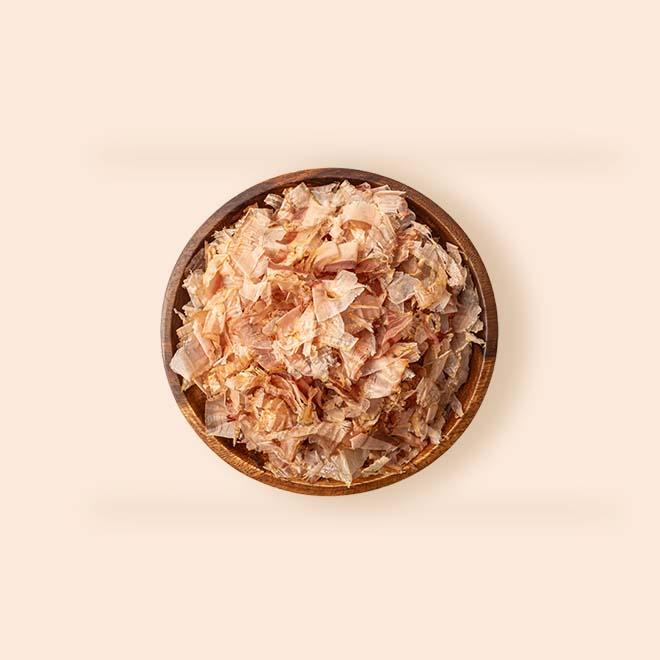Bonito Flakes




Bonito flakes, also known as katsuobushi in Japanese, are a key ingredient in many Japanese dishes, especially dashi, the basic broth that forms the foundation of many soups and sauces. They're made from skipjack tuna (katsuo) that's been simmered, smoked, and shaved into thin, delicate flakes.
There are several types of bonito flakes:
- Hanakatsuo: The highest quality flakes, made from the meaty back of the tuna. They have a delicate texture and intense flavor.
- Honkarebushi: Made from the entire tuna, excluding the head and intestines. They're less expensive than Hanakatsuo but still offer a good flavor.
- Mekabushi: Smaller, thinner flakes made from the belly of the tuna. They have a stronger flavor than Hanakatsuo and Honkarebushi and are often used as a condiment
Bonito flakes can be used in soups and broths, as a topping for salads and noodle bowls, or even as a snack.
When buying bonito flakes, there are several considerations you need to have. Pre-packaged flakes are convenient but might lose freshness faster. Loose flakes offer more control and freshness but require a shave cutter (kezuriki) for preparation. Smoked flakes boast a deeper, richer flavor, while unsmoked ones offer a milder, cleaner taste. Bonito flakes can lose their potency over time, so buy only what you'll use within a few months.
Store bonito flakes in an airtight container in a dark and cool place. Avoid storing flakes near strong-smelling ingredients as they can absorb odors. If buying loose flakes, consider transferring them to smaller airtight containers for portion control and longer shelf life.
Bonito flakes, rich in nitrogen and phosphorus, can act as a potent natural fertilizer for your plants. Simply sprinkle them around the base of your beloved greenery or mix them into compost for a nutrient boost.
Have some leftover fish bones? Don’t throw them away. Simmer them with bonito flakes and kombu to make a quick and flavorful dashi base for seafood soups or stews.
Initially, dried bonito was used as a protein source and flavoring agent. Over time, the drying and smoking process evolved, leading to the complex and nuanced flavors we enjoy today.
Different regions in Japan developed their own katsuobushi styles, each with unique flavor profiles and production methods. Honkarebushi from Kagoshima and kezuribushi from Tokushima are two renowned examples.
Tossing your bonito flakes with a little kombu seaweed in the storage container can enhance their depth of flavor. To revive slightly stale flakes, lightly toast them in a dry pan over low heat for a few seconds.
When making dashi, begin with a small amount of flakes and adjust to your taste. Too much can make the broth bitter. Overcooking flakes can release bitterness. Remove them after a few minutes for a delicate broth.
Bonito flakes are a good source of complete protein, containing all essential amino acids. They offer vitamins B12, B6, and niacin, along with minerals like phosphorus and potassium.
Bonito flakes can be high in sodium, so moderate consumption is advisable, especially for individuals with high blood pressure or those on a sodium-restricted diet.
Corrections or improvements? Email us at
content@sidechef.com